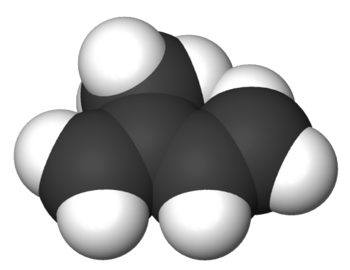 Bishop Hill
Bishop Hill Climate cool-aid
 Oct 1, 2015
Oct 1, 2015  Climate: Models
Climate: Models  Via El Reg, we discover that a whole new source of climate coolants has been discovered.
Via El Reg, we discover that a whole new source of climate coolants has been discovered.
A team of top-level atmospheric chemistry boffins from France and Germany say they have identified a new process by which vast amounts of volatile organic compounds (VOCs) are emitted into the atmosphere from the sea - a process which was unknown until now, meaning that existing climate models do not take account of it.
The coolant in which they are interested is isoprene, which was previously thought to be produced mainly by marine plankton. It now seems that it can be produced abiotically too, and in quantities that might even explain the model-observation divergence.
As with the last story, I'd suggest a measure of caution might be valuable.



Reader Comments (56)
As Rhoda can measure the change in radiative forcing from CO2 using even crude Vicrtorian instruments , feel it even with the naked hand, as Tyndall demonstrated 150 years ago, and quantitatively discern what several watts per square means by turning an electric blanket up a notch , she certainly can't be talking about climate change .
Oh, excuse me Mr Russell Seitz, you will just cite yourself as evidence as authority, and expect others to just suck it up while you offer no detailed arguments here at all?
My god, cold fusion was reported in Nature, so why do you think the world should accept your comment in Nature as the definitive answer? You are so far up yourself it is pathetic.
Please get over to that thread and explain why whacking something with high energy laser pulses is 'cold fusion' and not 'hot fusion'. Now.
And seeing as how the first Stranglers link seemed to vvvvussell your cage, here's another one:
(Get a) Grip (On Yourself)
As Michael copied above cold fusion was originally reported not in Nature, but The Journal of Electoanalytical Chemitry , volume 261, pages 301−308 (1989).
A journal which, prefiguring Pat Michaels Energy & Environment , was edited by one of the authors.
Michael's technical illiteracy is evident in his inability to comprehend what Nature found clear enough to print for a general scientific audiene.
Hot fusion means getting plasma temperatures high enough to over come the coulomb repulsion of the nuclei one is rying to fuse.
Cold fusion pertains to claims-- none of them reproduceable , to be able to drive such nuclear reactions in materials that don't even melt.
The latest such is one of the funniest pieces of crackpottery ever to illustrate the Dunning Kruger effect, but Michael is unlikely to get the joke
Is this the same michael hart whose snit began :
"I have actually now posted a link to an MIT lecture series on cold fusion for you to watch. " ?
Pathetic Russell.
Nature published an article in April 89, same month as your J Electro-Anal Chem reference.
I never said "originally" published in Nature, just pointed out that the phenomenon was reported in Nature. You are splitting hairs.
Letters to Nature
Nature 338, 737 - 740 (27 April 1989); doi:10.1038/338737a0
Observation of cold nuclear fusion in condensed matter
I'm sure no cold fusion experiments would be reproducible by you, Russell: I don't even believe you would genuinely try.
Verdict: Still pathetic. A disgrace.
[That's my verdict on you, not cold fusion]